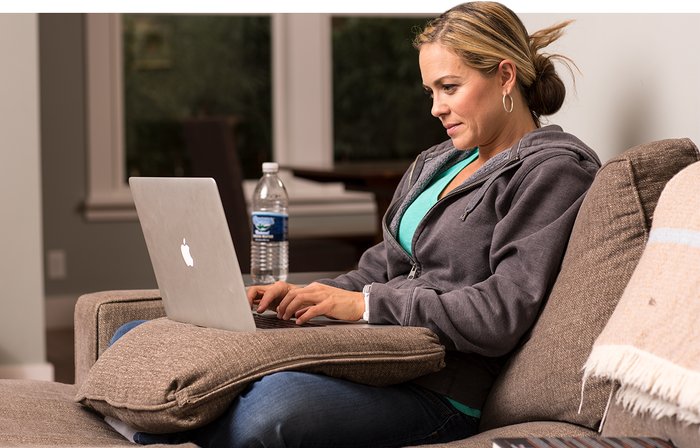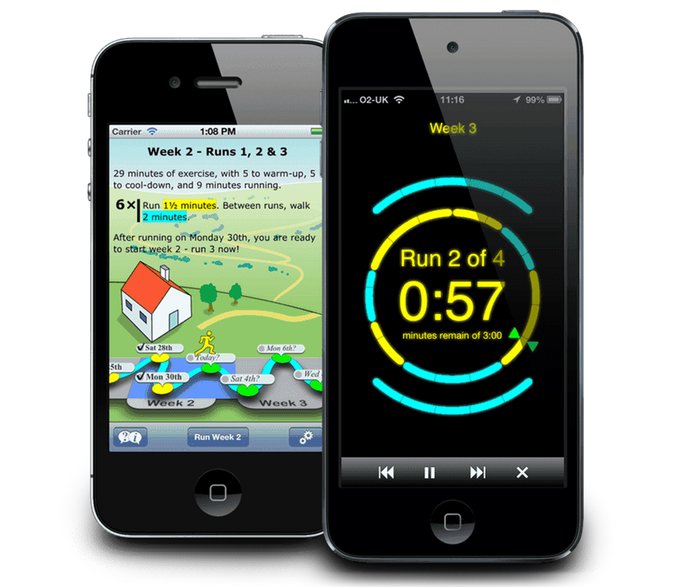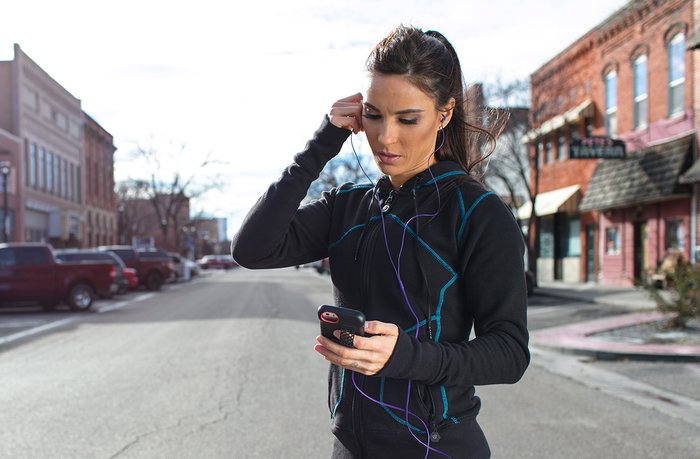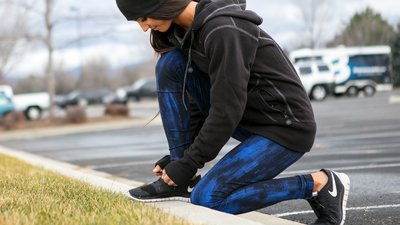If you've never done a 5K, you probably think one of two things: either you can phone it in and your gym fitness will carry you through; or it's an impossible, masochistic goal. True, competitive running can put you through the wringer if you're not careful, but anyone can do it if they approach it methodically. You'll end up stronger and fitter, with a new respect for men in split shorts.
1. Know The Basics
Before you sign up, know what you're getting into. Five kilometers equals 3.1 miles. If you can run 30 minutes on the treadmill, it's likely that you can run a 5K with little preparation. On the other hand, if half an hour of treadmill jogging sounds like a death march, you have some work to do.
2. Know The Basics? Then Sign Up!
Race sign-ups are everywhere. Find events through your gym or local YMCA, search online, or stop into a running store and ask the employees what's coming up. Pick a race that gives you enough time to train: 8-10 weeks if you're starting from scratch. Find out what the course is like—flat or hilly, pavement or trail—so you'll know how to prepare.

If you choose a flat, paved course, your main task is making sure you're acclimated to the distance and the impact of pavement, which is harder on your body than treadmills or trails. A trail race will give you a softer surface that's easier on your joints, but if it includes hills, you'll need to start running on an incline so you don't wreck your calves or hyperventilate during the race.
Once you find your race, fork over the money and put it on your calendar so you don't punk out. In fact, do more than put it on your calendar. Post the date on your refrigerator. Write it on your bathroom mirror. Program it into your phone. If you do the work, it'll be a breeze. If you blow off a bunch of runs, you'll suffer.
3. Wear the Right Shoes
Lifting involves a lot of equipment: weights, kettlebells, bands, and racks. Running requires only one thing: a good pair of shoes. That one thing is crucial. Your shoes affect how you stand, stride, and land. Running in bad shoes is like lifting with bad form. To prevent injury, wear a good pair.
Go to a legit running specialty store to get fitted. The salesperson should ask you questions, watch you run, and find the right kind of support for your individual biomechanics. If they don't seem like they know what they're talking about, go somewhere else.
Factors such as what part of your foot you land on, how injury-prone you are, and how heavy you are can influence the type of shoe you need. And remember, one pair doesn't last forever, especially if you're logging the miles. Replace your shoes about every 500 miles max, or when they start to feel flat or hurt your feet.
If you do purchase new shoes, give yourself enough time to break them in and become used to them before the race. Running a 5K in brand-new, untested shoes is a surefire recipe for pain or injury.
4. Create a Plan
Running is strong medicine, so ease in. Would you advise your friend who's never lifted anything other than a pint glass to walk into the gym and start throwing plates on the bar? Didn't think so.

With running, you've got to build a base, just as you do with lifting. Find a training plan geared toward your level of running fitness. A typical program length for a 5K is around 8 weeks, so count back from race day to see when you need to start training. You can find all kinds of training plans online, but one of the best for total newbs is a free mobile app called Couch to 5K (C25K), which you can get for both iPhone and Android.
C25K is a smart, gradual program that will get you race-ready in nine weeks. It takes the guesswork out of training so you can't progress too fast and hurt yourself, which is surprisingly easy to do without a plan.
If you already run occasionally on the treadmill, slowly work up to running 30 minutes three times a week. Start doing at least one session on a route that mimics the surface and terrain of your race to avoid surprises.
5. Get Loose
Warm up before every run. This can be flexible—a handful of lunges, a few minutes of walking, or even your weight-training session. Just don't jump out of bed and sprint down the street. Maybe Rocky can wake up, slam a bunch of raw eggs, and run out his front door, but that doesn't mean you should.
Also, don't let miles logged replace your weight training. Weight training is important for runners.
6. Get Motivated
Running sucks. It's uncomfortable, hard, and boring. Weather is unpredictable and can make running even harder than it already is. No matter the excuse, one thing's for sure: If you don't find a way to love it, you're not going to stick with the plan.
Get the right gear so you don't hate life as soon as you step outside. Your gym clothes are fine if it's warm outside, but a lightweight jacket and fleece-lined tights (it's OK to wear shorts over them) are key in cold climates. Wear pieces that are made for being active, with technical fabrics that wick sweat, regulate temperature, repel precipitation, and keep you smelling as fresh as a spring daisy.

A great workout playlist can get you revved up as well. Something aggressive will power you through tough days—think Dirty South, EDM, metal, or whatever raises your adrenaline. Another tactic is to listen to something cheeseball or freaking weird that forces you to smile every time you hear it. My go-to playlist includes Eye of the Tiger and a compilation called Ultimate Dance Party 1997. Mix it up.
Fit training to your schedule and preferences. Be honest—if you envision yourself running trails at dawn before work but always oversleep, run after work instead. If you hate going out in the cold, run in the climate-controlled gym. The most effective runs are the ones you actually do.
And get backup. If you find yourself blowing off runs, join a running group or find a training partner. Wear a fitness tracker. Get into online running communities like Strava or Map My Run. It'll keep you accountable.
7. Don't Overthink it
Forget about setting a finishing-time goal. You won't have a baseline for what your fastest is, and your body isn't adequately adapted to the stresses of running to withstand grueling speed workouts.
Plus, just because you managed an 8-minute mile on the treadmill doesn't guarantee you'll be able to repeat that performance during the race. Variables like terrain, weather, running earlier than you're used to, or what the other racers are doing around you can all affect your performance.
Creating an arbitrary goal just sets you up for disappointment, when you should be proud that you're accomplishing something new. Focus on completing the race. Most people can run a 5K in about 30 minutes, give or take a few. When you train, ignore distance and pace, and just work on being able to run for that long.
Other things you don't need: A hydration belt. Energy gels. A GPS watch. Your phone. You can live without it for half an hour, I promise. These things may be needed during a long training run or on an unfamiliar trail, but a half-hour run isn't long enough to require refueling before you finish. The stats that a fancy watch provides can be fun, but at this level it's unnecessary. Bring your phone if you use it to follow a training app, but also consider memorizing the workout and leaving it at home. You'll love how light and free you feel.
Once you have your race date, your training plan, your shoes, and your tunes, there really isn't much to think about. You can turn your brain off, turn the music on, and go for it. In a few weeks, you'll be queued up at the starting line like you totally know what you're doing. And you'll crush it.

